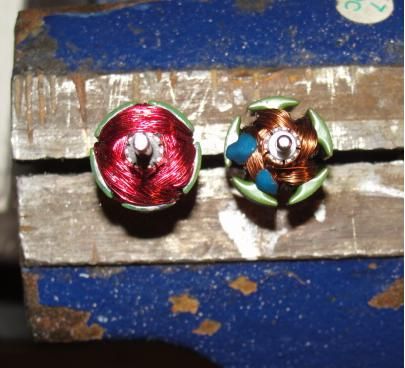UFO
I'm using high powered lipo pack around 132volts @ 16amps. I need the high voltage to handle the competition. They have 200hp and over 250lbs of torque with the champions of champions driving! We need to push our motors to its limit. I know the motor will spin a lot faster than 9000rpms with the high voltage. I just need the motor to spin to high rpms as quick as possible. I will target the max rpms to 9000. I think I will go with the 1:4 gearing ratio..... Sorry that's 4:1ratio!
The motorcycle engineer, Tajima is thinking about designing an aluminum casing and stronger magnets for the motor. His business slows down during winter season. He will have time to build Radiance and a MotoGP 3 racer for the spring.
Midaz
I'm using high powered lipo pack around 132volts @ 16amps. I need the high voltage to handle the competition. They have 200hp and over 250lbs of torque with the champions of champions driving! We need to push our motors to its limit. I know the motor will spin a lot faster than 9000rpms with the high voltage. I just need the motor to spin to high rpms as quick as possible. I will target the max rpms to 9000. I think I will go with the 1:4 gearing ratio..... Sorry that's 4:1ratio!
The motorcycle engineer, Tajima is thinking about designing an aluminum casing and stronger magnets for the motor. His business slows down during winter season. He will have time to build Radiance and a MotoGP 3 racer for the spring.

Midaz

 . So you meant right here is where you introduced the idea, in the same post where you were talking about the dual rotor and tearing apart a Tamiya BLDC, no help there for the task at hand but you found something else very interesting.
. So you meant right here is where you introduced the idea, in the same post where you were talking about the dual rotor and tearing apart a Tamiya BLDC, no help there for the task at hand but you found something else very interesting.


 This image, in my mind's eye, is hilarious, huh? Thanks, I had been wondering about just using a hand drill to do the winding... Great info: 2" per revolution. I think the magnet wire could take tighter winding, say 4 or 10 or 20 rev per inch, but still maintaining the integrity of the insulation. Wonder what that would do to performance. definitely make a high guage stranded cable thicker fast, increasing total resistance a lot, using more wire.
This image, in my mind's eye, is hilarious, huh? Thanks, I had been wondering about just using a hand drill to do the winding... Great info: 2" per revolution. I think the magnet wire could take tighter winding, say 4 or 10 or 20 rev per inch, but still maintaining the integrity of the insulation. Wonder what that would do to performance. definitely make a high guage stranded cable thicker fast, increasing total resistance a lot, using more wire.

 But that is not our application.
But that is not our application.
Comment